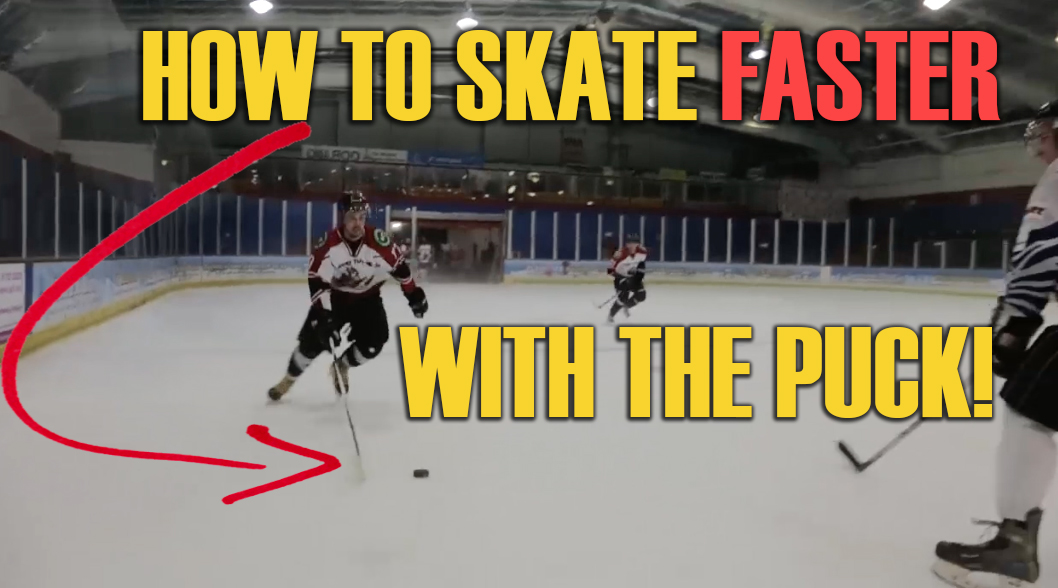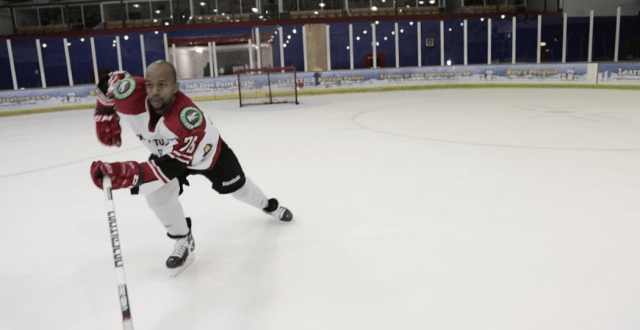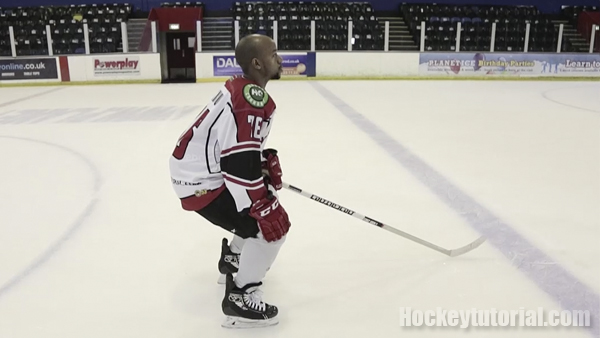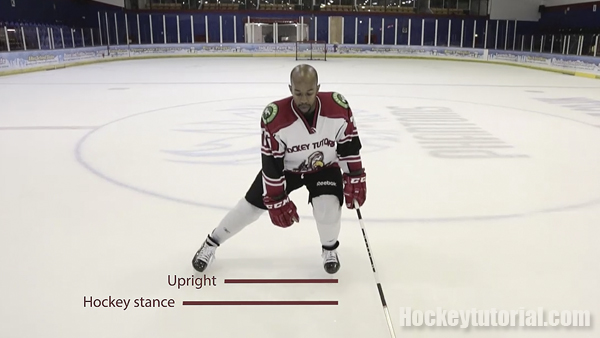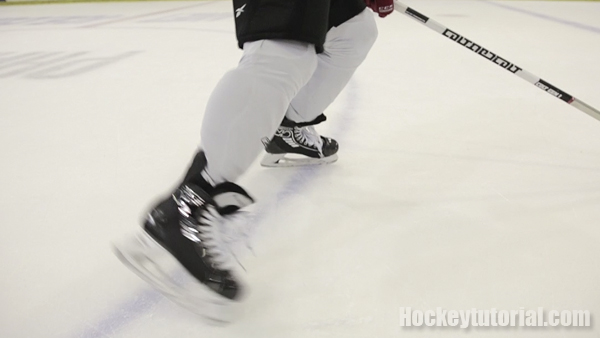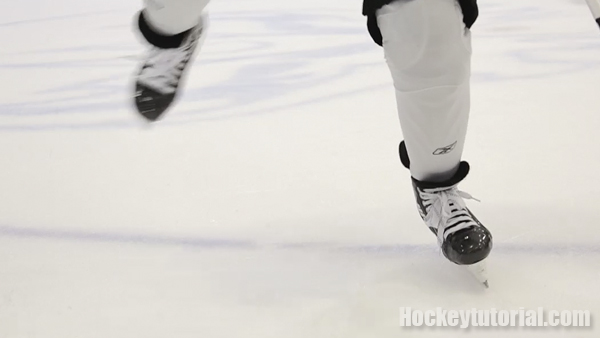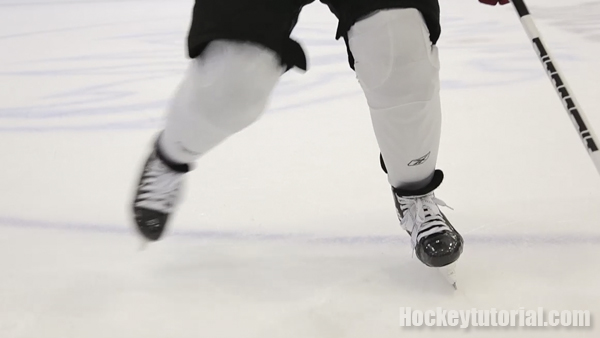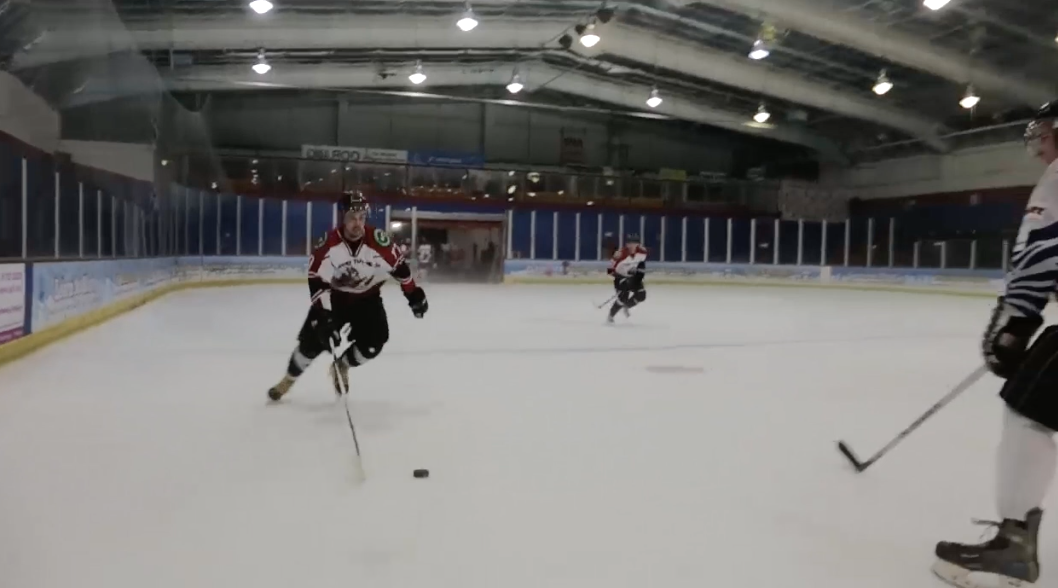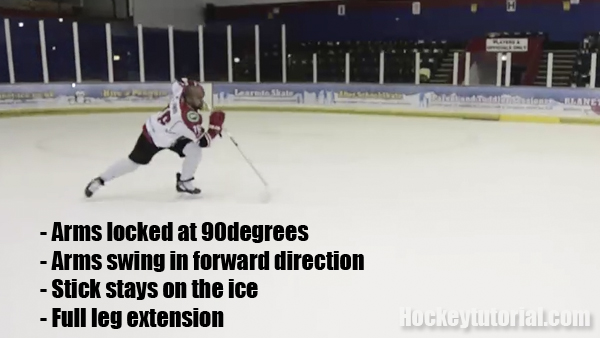How To Skate Faster In Hockey Step 1
Hockey Stance – Your hockey stance is one of the most fundamental points to learn and improve on in order to become a faster skater:
- Mainly on your inside edges
- Skaters around shoulder width apart
- Knees bent over the toe caps of your skates
- Shoulders square to the ice
- Chest Up (Keeps weight over back portion of skates. Helps with breathing)
- Head Up (So you can keep your eyes on the play)
.
If you’re looking to become a much faster skater you need to get use to having a deeper knee bend. The diagram below will show why:
If your knee bent isn’t deep enough, you only have a short distance to push from and will not be maximising on the power from the push (You can see the leg is not fully extended). This will not allow you to skate at your maximum speed.
By bending you knees as close to a 90 degree angle as possible, you can almost double the distance you have to push from. This will allow you to maximise on the power you get from the push as you are using your entire leg (full extension).
How To Skate Faster In Hockey Step 2
Leg extension – Making sure you fully extend your legs with each stride you take will have a profound impact on how fast you can skate. There is almost a vital motion that can be overlooked while parting our forward stride “Toe flick”. The Toe Flick is an important step that if used and practiced can seriously increase your skating speed. After each stride, the last part of the skate to touch the ice should be the inside edge of your toe. Get into the habit of rocking your skate from heel to toe as you extend your leg out for the forward stride. Not only should this be the last point of contact between you and the ice, you should also focus on flicking or pushing powerfully with the inside edge of your skates toe off the ice at the end of your leg extension (listen for the ice crunch) this will have a massive impact on your skating speed.
How To Skate Faster In Hockey Step 3
Recovery – To maintain and build more speed, the recovery needs to be executed properly. This is the motion of bringing your skate back underneath you after the leg extension for the forward stride. “The shortest route between to points is a straight line” Keep your skates low to the ice during the recovery, avoid dragging your skates on the ice or lifting the skate high up during the recovery.
Leg to high
Leg low to the ice.
How To Skate Faster In Hockey Step 4
Arm swing – A common issue during the stride is bad arm swing, if your arms are swinging uncontrollably or laterally, this will actually slow your stride down:
- Side to side or lateral arm swing adds lateral movement to your stride, as your skating in a stride line, this will only slow you down.
- If your arms are fully extended this will also reduce your speed during the stride.
- Keep your arms lock at a 90 degree angle and rock them back and fourth to help drive your stride forward. This will also help you keep control of the puck (if skating with one hand on the stick during a breakaway where speed is key!)
Skating With the puck – To maximise on your ability to generate more speed you’ll need to take your bottom hand off your stick. This will allow you to generate more forward momentum and drive you quicker up ice. Maintain control over the puck with your sticks top hand by using it to guide or push the puck up ice.
Point to look out for
- Avoid bobbing up and down, you need to maintain the same level to throughout your stride.
- Try and keep your chest up and shoulders square. This will not only help you see the ice better, but also help to control your breathing during the stride.

